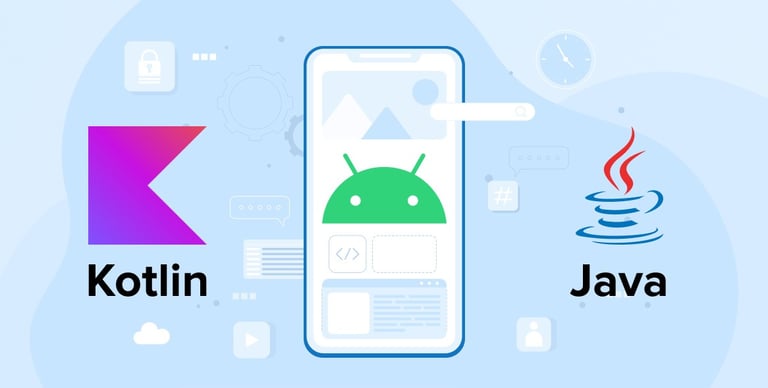Kickstart Your IT Career with MindScripts Tech! 🚀 Expert-Led Training | 3 Days Free Demo | 100% Placement Assistance | Join 1500+ Company Tie-Ups Today! Ready to Succeed? Let’s Begin!
Java vs. Kotlin: A Comparative Analysis for Android Development
Android app development has witnessed a significant shift in recent years with the introduction of Kotlin, a modern programming language that interoperates seamlessly with Java.
MindScripts Tech
1/16/20242 min read


Introduction:
Android app development has witnessed a significant shift in recent years with the introduction of Kotlin, a modern programming language that interoperates seamlessly with Java. Developers now face a crucial decision when embarking on Android projects: whether to stick with the familiar Java or embrace the conciseness and expressive power of Kotlin. In this blog post, we'll conduct a comparative analysis of Java and Kotlin for Android development, exploring the strengths and considerations of each.
1. Conciseness and Readability: Kotlin's Edge
Kotlin is lauded for its concise syntax, reducing boilerplate code that developers often encounter in Java. Features like data classes, extension functions, and smart casts contribute to more readable and expressive code. Developers find that Kotlin allows them to achieve the same functionality with fewer lines of code, leading to increased productivity and maintainability.
2. Null Safety: Kotlin's Game-Changer
One of the notorious pitfalls in Java development is the ubiquitous null pointer exception. Kotlin addresses this issue head-on with its built-in null safety features. Nullable and non-nullable types in Kotlin ensure that developers explicitly handle null values, reducing the likelihood of runtime crashes caused by null references.
3. Interoperability: A Seamless Transition
For teams considering adopting Kotlin, the good news is that it interoperates seamlessly with existing Java code. This means that developers can gradually introduce Kotlin into their projects without the need for a complete rewrite. The smooth transition allows teams to leverage Kotlin's features gradually while still benefiting from their established Java codebase.
4. Coroutines for Asynchronous Programming: Kotlin's Advantage
Asynchronous programming is a crucial aspect of modern app development, and Kotlin introduces coroutines to simplify this process. Coroutines provide a more straightforward and readable way to write asynchronous code compared to Java's traditional thread-based approach. The result is cleaner, more maintainable code for handling asynchronous tasks in Android applications.
5. Community Support and Adoption: Java's Legacy
Java has been the primary language for Android development for many years, resulting in a vast ecosystem, extensive documentation, and a large community of developers. While Kotlin is gaining popularity rapidly, Java's long-standing presence means that developers can easily find solutions to common problems and tap into a wealth of resources.
6. Tooling and IDE Support: A Tie
Both Java and Kotlin enjoy robust support from major Integrated Development Environments (IDEs) like Android Studio. Developers can seamlessly switch between Java and Kotlin files in the same project, allowing for a flexible development environment. The quality of tooling and IDE support is often a matter of personal preference.
Conclusion:
Choosing between Java and Kotlin for Android development involves weighing the advantages and trade-offs of each language. While Java brings a wealth of experience, a mature ecosystem, and a large community, Kotlin introduces modern language features, enhanced readability, and null safety. The decision may depend on factors such as team expertise, project requirements, and the desire for a more modern and concise development experience. Ultimately, both Java and Kotlin have their strengths, and the choice depends on the priorities and preferences of the development team.

At MindScripts Tech, our mission is to empower individuals through cutting-edge IT education, bridging theory with practical skills. We cultivate innovation, nurture creativity, and prepare our students to thrive in the dynamic IT industry, fostering a globally competitive workforce.
